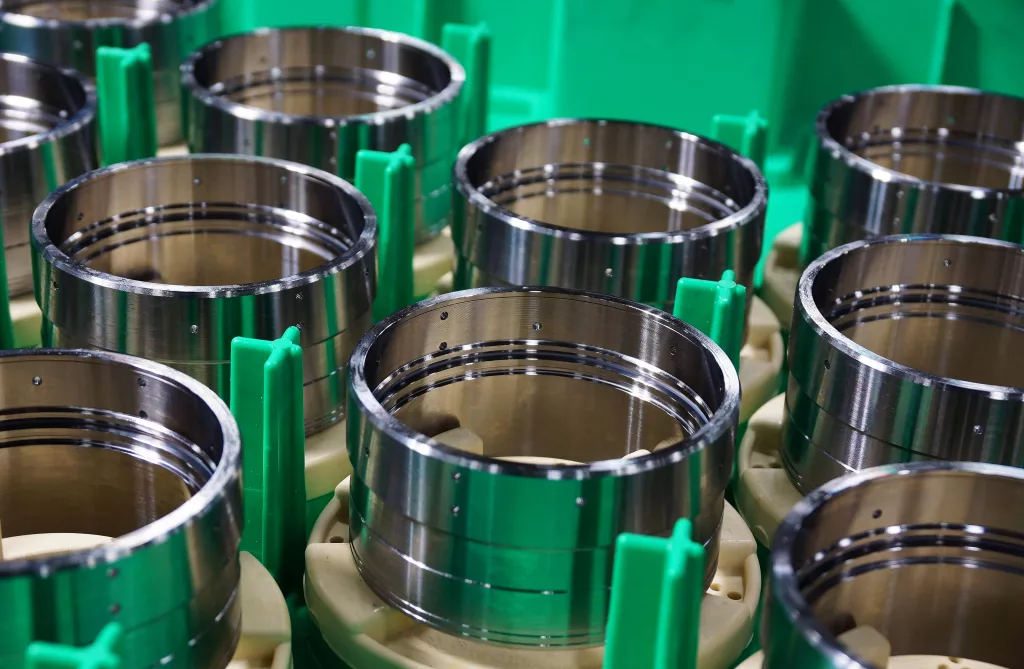“Widely mixed” data shows that the economic recession recovery for the West Michigan Industrial Economy continued in September, but at a bit slower pace that had been hoped for. That’s the crux of the latest report from Professor Brian Long, Director of Supply Management Research at Grand Valley State University, who keeps tabs on all of the numbers through a comprehensive monthly survey.
Dr. Long says, “The economic recovery that began in July is still on track, but at a slower pace than hoped,” by pointing out that, “According to the data collected in the third and fourth weeks of September, the New Orders Index, our best indication of the pace of business improvement, came in at +18, virtually unchanged from last month’s rate of +19.”
Professor Long goes on to report that the September Production Index “upticked” to +20 reading, a modest improvement over August’s +13. Meanwhile, activity in the purchasing offices, the Purchasing Index portion of his report, also edged up to +14 from +10. Long says, “The overall tenor of our survey participants remains widely mixed, with the ‘essential’ firms not losing a beat and others reopening to service pent-up demand. However, some less fortunate firms are growing increasingly pessimistic about returning to normal over the next few months—or even years.”
Turning his attention to the automotive sector, Professor Long says, “It is worth repeating that a major component of the job growth in West Michigan for the past ten years has been the expansion of our automotive parts suppliers. Hence, over time, the automotive sales statistics constitute a very significant component of the West Michigan economic health going forward.” Looking at his research, the Professor adds, “Fortunately, the industry is faring much better than expected. Many of the auto firms have abandoned monthly sales reporting in favor of quarterly reports, so Automotive News on October 2nd posted statistics for the third quarter of 2020. Looking at the Detroit Three, General Motors quarterly sales were down by 9.9-percent, Ford 4.8-percent, and Fiat Chrysler 10.4-percent. Among the other major brands, Toyota sales were down by 11.0-percent, Honda lost 9.5-percent, Subaru fell 8.8-percent, but sales at Hyundai-Kia only dropped a scant 0.9-percent. Long suggests, “The ongoing headwinds for the industry include a combination of factory shutdowns, depleted dealer inventories, relatively high unemployment, weak consumer confidence, and lower incentives. In addition, almost all of the major brands continue to report a significant drop in fleet sales to Hertz, Avis, National, and the other rental car firms that service a depleted market for business and vacation travelers.”
Jessica Caldwell, Edmunds’ Executive Director of Insights, further comments: “Third-quarter sales make at least two things apparent: Most of the doomsday scenarios forecasted at the beginning of the pandemic fortunately did not hold true, and the American consumer stepped up to become one of the many heroes in this chapter of resilience for the automotive industry. Consistently lower interest rates encouraged new-car buyers — who were less likely to be financially hindered by the economic fallout of the pandemic — to pull the trigger on a purchase.”
Turning to the West Michigan employment numbers, Dr. Long contends, “Although we are now seeing signs of improvement, the West Michigan unemployment rate continues to be significantly high.” He adds, “Paradoxically, several firms are again reporting difficulty in finding replacement workers. Our September survey’s Employment Index remained positive but eased slightly to +9 from August’s +13. At the state level, the Department of Technology, Management, and Budget September 24th unemployment report for August noted that the seasonally adjusted state-wide unemployment rate remained unchanged at 8.7-percent.”
Looking at Industrial inflation for West Michigan, the September Pricing Index came in at +18, up significantly from August’s +9. In confirmation, the ISM national Pricing Index rose to +25 from +19.
Dr. Long says when his spotlight turns to the world of Business Confidence, “Again, the news is good,” adding, “At the local, national, and international levels, business confidence is definitely improving.” His September report shows the Short-Term Business Outlook Index, which asks local firms about the business perception for the next three to six months, upticked sharply to a 5-month high of +20 from +0. The Long-Term Business Outlook Index, which queries the perception for the next three to five years, remained near August’s two-year high of +41, but eased modestly to +36 in the current report for September.
Summarizing his September report, Dr. Long says, “To no one’s surprise, the Covid-19 cases have begun to rise as schools, restaurants, and other institutions continue reopening. Also, to no one’s surprise, a major component of the rise in additional cases has come from more people in close proximity. However, it seems likely that enough people are following these simple rules that another March-style shut-down is unlikely.”
Continuing his summation, Long says, “For our cyclical industries, automotive is, so far, edging back to normal a little more quickly than originally anticipated. However, from the layoffs announced by the office furniture industry, it is obvious many future office furniture customers are rethinking the concept of the traditional office. Modern technology is now allowing some employees to productively work from home, and a significant number of those employees have indicated that they wish to continue doing so. In addition, office designers and engineers are feverishly working on new office designs that incorporate more separation and social distancing for office workers who must work in a traditional office and cannot work from home.” Long concludes, “It’s a little late, but the designers and engineers for some local firms are working on lower cost configurations for the home office market to compete with out-of-state firms like Hon. These new market segments could be significant. All of this reconfiguration will take time, but how much time is still uncertain.”
As is the Professor’s long-standing tradition, he shares a number of verbatim anecdotal comments in an anonymous fashion from among the survey participants. Here are some of those comments culled from his report:
- “Business is starting to pick up, and the forecast for the Q1 of 2022 is looking like a pre-Covid forecast.”
- “Automotive is back, but demand is still very volatile. We are back to 85-percent of pre-Covid sales numbers.”
- “Normalcy will not be back for a long time, I fear.”
- “Our sales have softened some. But all things considered, we are doing fine. I imagine it could be much worse, so we should consider ourselves as fortunate.”
- “Hiring production labor is still a challenge.”
- “We need new PO’s, and capital budgets are not allowing money to be spent.”
- “Long term, pricing is expected to stabilize.”
- “The Covid shutdown is impacting freight costs and product availability.”
- “August was a great improvement, and closer to what I would call a normal business level. But September looks like it will be down.”
- “Steel pricing has turned from multi-year lows to going up the last 5-6 weeks.”
- “We are not seeing lower prices on the finished products we are purchasing. Some commodity pricing is down on products we sell to recyclers. “
- “Our big customers remain busy, but the smaller ones are not picking up like we had hoped.”
- “Sales are trending up, but still 30-percent below last year at this time. We are putting our work force back on 5 days a week (from 4 days a week) in anticipation of the sales continuing to trend up.”
- “Business is generally down. The newest sector of our business is doing pretty well considering the economic climate. The other sector is down quite a bit.”
- “This country needs to open up and quite playing politics. It’s been very damaging to the furniture industry which has suffered a great deal.”
- “Since June we have overachieved on our sales plan. We’re still down for the year, but recovering better than expected.”
- “September is going very strong in the automotive sector.”
- “I think some companies are having communication issues with employees working from home. There are issues with vendor’s customer service and sales reps not doing things that we have discussed. This has caused minor issues with orders and parts on backorder to become massive problems.”
You can read Dr. Long’s full report and see his charts and graphs by clicking the link below:






